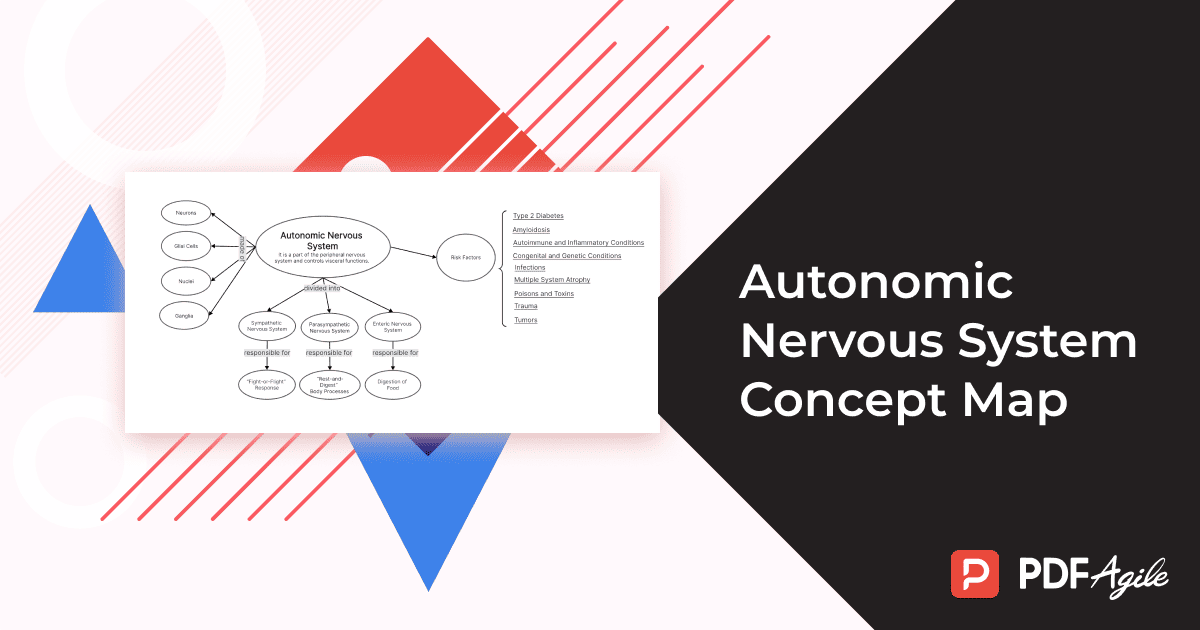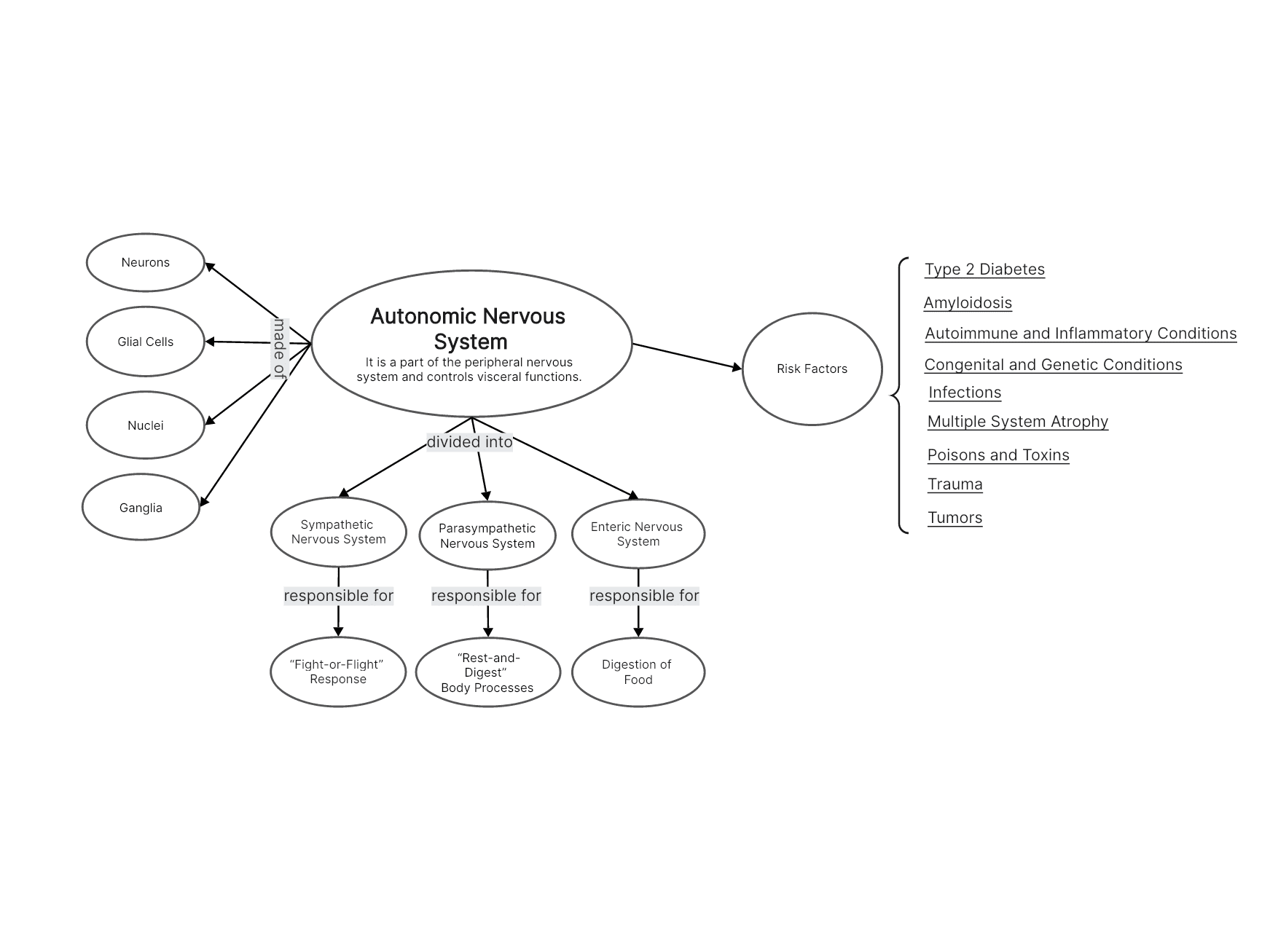Understanding the Symphony Within: A Visual Guide
The human body is a complex machine, constantly working to maintain a state of balance. This intricate dance of internal regulation is largely orchestrated by the autonomic nervous system (ANS). Often referred to as the body's "autopilot," the ANS governs a vast array of involuntary functions, ensuring everything from your heart rate to digestion runs smoothly, even without conscious effort.
What is an Autonomic Nervous System Concept Map?
A concept map is a visual tool that helps organize and connect information. In the context of the ANS, a concept map serves as a roadmap, laying out the key components and their interactions. This visual representation offers a clear understanding of how the different parts of the ANS work together to maintain homeostasis (internal stability).
Benefits of Using an Autonomic Nervous System Concept Map
- Enhanced Learning: By visually depicting the relationships between the ANS, its divisions, and its functions, a concept map simplifies complex processes, making learning and memorization more effective.
- Improved Organization: Concept maps help organize vast amounts of information into a clear, concise, and easy-to-understand format. This fosters a deeper understanding of the intricate workings of the ANS.
- Effective Review Tool: Concept maps serve as excellent revision tools, allowing students or individuals to quickly refresh their knowledge of the ANS and its functions.
How to Use an Autonomic Nervous System Concept Map?
- Identify Key Concepts: Start by listing the main components of the ANS, such as the sympathetic and parasympathetic divisions, along with their associated functions (e.g., heart rate, digestion). You can also include the peripheral nervous system, highlighting the distinction between voluntary (somatic) and involuntary control.
- Visualize Connections: Use a diagram or mind map software to create a visual representation. Place the central concept (e.g., Autonomic Nervous System) at the center and connect it to its sub-branches (sympathetic and parasympathetic divisions). Use arrows and linking words to illustrate the relationships between these components and their functions. For example, an arrow connecting the sympathetic division to "increased heart rate" could be labeled with "prepares for action."
- Add Details: Once the basic structure is in place, incorporate additional details like neurotransmitters involved in each division's function. You can also include real-life examples to showcase how the ANS operates in everyday situations (e.g., increased heart rate during exercise).
Get Your Free Autonomic Nervous System Concept Map Template!
To kickstart your learning journey, we've created a free, downloadable concept map template specifically designed for the autonomic nervous system. Click the Use Template button above to access this valuable resource.

Looking for More Concept Map Templates?
Explore our extensive library of concept map templates in PDF format at the PDF Agile Template Center. Enhance your learning experience and delve deeper into various scientific concepts using these versatile tools.

